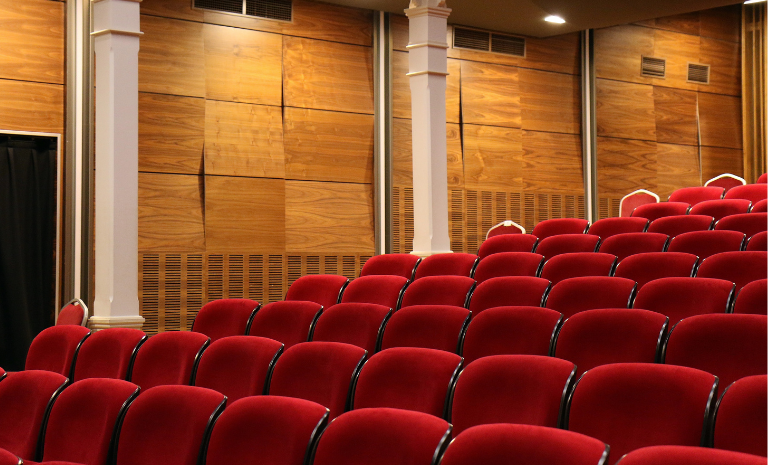Arts and Culture
Business Strategy
Article
The Culturephiles
aba42229-d2f7-4216-8697-73deaa2ebbb4
8 min
https://edge.sitecorecloud.io/tessiturane75c3-tessituraneee12-development-6640/media/Images/Discover-Images/Andrew-Blog/Essentialism-768X465.jpeg?h=465&iar=0&w=768
Streamlining without compromising in the COVID age
The Art of Essentialism

President & CEO, Tessitura
The Art of Essentialism
11/11/2020
8 min
The word “essential” has had quite a year.
Since the start of the pandemic, Tessitura has talked with thousands of cultural professionals about their challenges and successes. We have synthesized our learnings into Six Traits of Forward-Looking Cultural Organizations. This post is about Trait 4: Streamline Operations.
From the essential workers keeping our communities alive, to arts and culture budgets slashed to only the most essential items, it has become a word synonymous with anxious survival. Still, for all the baggage of essential in 2020, remember that within this word lives a far more inspiring one: Essence.
Essence is what remains when everything else is stripped away. The scent of cinnamon and apple hanging in the air after the pie comes out of the oven. As I have spoken with leaders at cultural organizations this year, I see the forward-thinking ones returning to the essence of their mission time and again: focusing intensely on their mission and radically streamlining everything else.
Here are four questions I’ve seen forward-thinking leaders asking themselves in the time of COVID.
Question 1: What is essential right now?
In his book Essentialism, Greg McKeown points out that the word “priority” didn’t have a plural form until the 20th century. The most important thing used to be only one thing! He goes on to suggest that by embracing what is truly essential and letting everything else fall away, your business will improve dramatically. McKeown believes that the mantra shouldn’t be “what more can we pack in” but “how can we do less but better?”
Which begs the question: what one thing is truly essential for an arts and culture business right now? My answer continues to be this: connecting your community with your culture. That is the essence of what we do. Everything else should be offloaded or optimized.
“What one thing is truly essential for an arts and culture business right now? Connecting your community with your culture.”
Question 2: What isn’t contributing to the essence of your mission?
As the pandemic hit and the lockdowns began, we watched cultural organizations ask themselves this question and make heart-wrenching decisions as a result. Our businesses are leaner, our teams smaller. While the initial upheaval may be behind us, this is a question that should now permeate every initiative and decision going forward.
In his seminal book Good to Great, Jim Collins finds that great companies remain great, in part, by confronting the brutal facts. The facts will continue to be brutal in arts and culture for some time. As the pandemic wears on, the contours of “connecting your community with your culture” will change, but the essence of your mission will not. With each change, are you continuing to ask this question and acting on the answer?
Question 3: What is the most effective way to meet your mission right now?
The Essentialism motto is “less but better.” Questions 1 and 2 are about less: honing your mission footprint to its essence. Questions 3 and 4 are about better: improving your leaner operation by being more effective. Forward-thinking cultural leaders are obsessed with effectiveness right now. In a recent roundtable Tessitura hosted for theater executives, one major theme was dubbed “prudence is the new bold,” in a nod to the importance of optimizing "prudent" operational effectiveness to remain strong.
“Forward-thinking cultural leaders are obsessed with effectiveness right now.”
I’ve been surprised by the number of cultural organizations using the pandemic to work on operational improvement tasks like data cleanup and system replacements. Effective executives realize that if you focus all your energy on the essence of your mission, the underlying operations must be as streamlined and optimized as possible.
Question 4: What can you rent rather than own?
As they explore all the ways to operate most effectively, many executives are finding that renting the solution is sometimes better than owning it.
Ownership isn’t what it used to be. People used to buy cars, then they leased cars, now they call an Uber. There is a good chance that your cabinet of DVDs has been replaced by a recurring Netflix subscription. Millions of people entrust their tax preparation to TurboTax Online rather than struggling through myriad pages of soul-sucking government forms.
Our society has embraced renting over owning because it is a trend that has reduced clutter, improved efficiency and let experts take difficult or tedious tasks off our plates. In short: renting versus owning is a potent way to streamline your personal operations and it is no different for your business operations.
Organizations large and small find that renting services rather than holding assets (known as an asset-light strategy) allows them to be more nimble, scale quickly, reduce risk, and focus their limited resources on the essence of their mission.
Zannie Voss, Director of the National Center for Arts Research at SMU, is a strong proponent of asset-light strategies for arts and culture organizations. In an episode of the CI to Eye podcast with Erik Gensler, she discussed SMU research that showed (even prior to the pandemic) that many cultural organizations struggled financially, in part, because of the weight of assets on their books. Explaining the risks of an asset-heavy approach, she had this to say:
“Once we own something... on the one hand [this is] a real commitment to those who are helping to make the art and a commitment to the community. On the other hand, once you own that asset and you have that fixed commitment, it means that you have less flexibility in terms of allocating your resources, should new opportunities come up or you want to make course corrections.”
After zeroing in on your essential mission and focusing on operational effectiveness, is there anything you should rent rather than own?
“Renting versus owning is a potent way to streamline your business operations.”
Even in the midst of a budget crisis, there is opportunity for improvement. In fact, streamlining operations has quickly has moved from advisable to critical. Cultural organization leaders can use this moment to recommit to what is essential, chose the most effective way to meet the moment, and emerge stronger on the other side.
• • •
If you would like to learn more about the Six Traits and evaluate how your own organization is demonstrating them, download our strategy guide.
Topics
Arts & Culture
/Business Strategy

Make your on-sales a success
Ticketing & Admissions / Digital / Customer Service / Technology
Eight tips to help you plan for a smooth on-sale

A contactless customer journey with a personal touch
Arts & Culture / Business Strategy / COVID-19 / Technology / Ticketing & Admissions
How Georgia Aquarium creates a visitor-focused experience